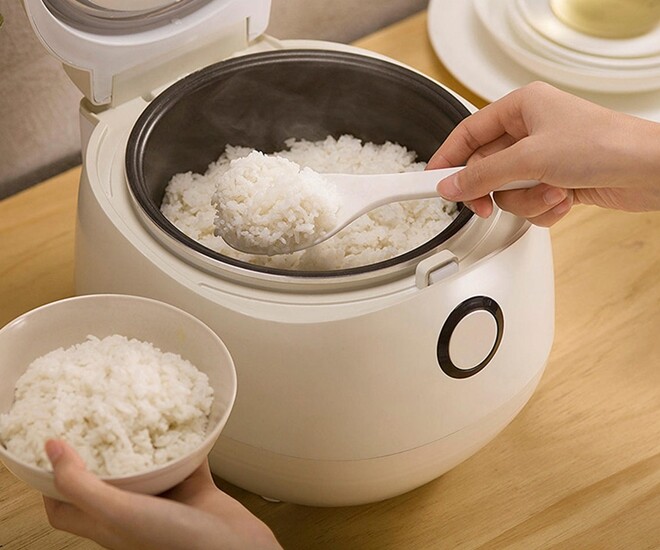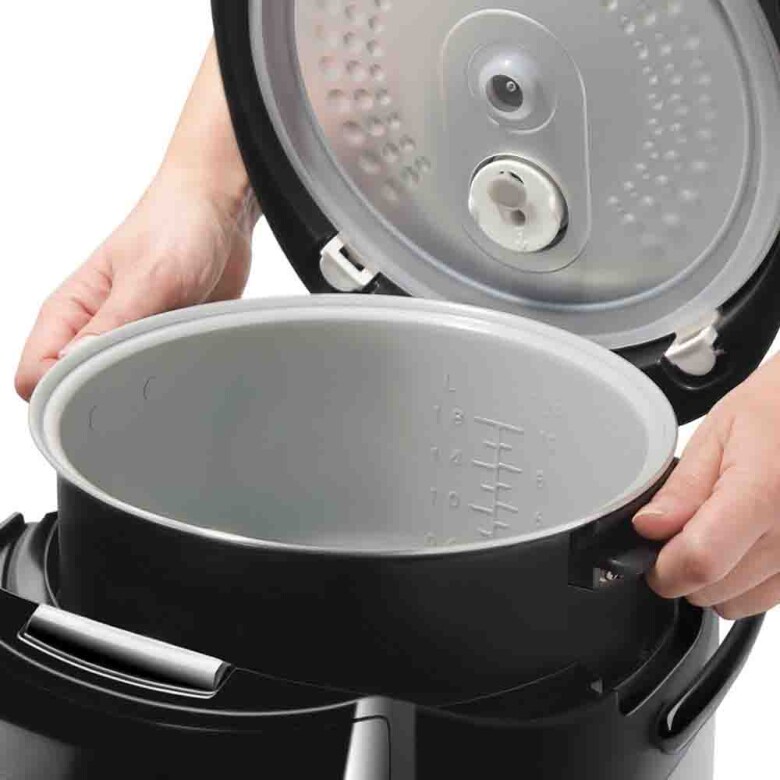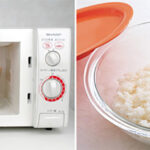With electricity prices constantly rising, energy conservation has become a priority for many Vietnamese families. However, a common habit when using rice cookers is keeping them on the warming mode for hours, unknowinglysection class=”js-selection-share-button-container” id=”selection-share-button-container”> unknowingly wasting a significant amount of electricity. So, how can we use rice cookers in a way that saves energy and remains effective?
Why should you unplug the rice cooker after the rice is cooked?
Once the rice is cooked, most rice cookers automatically switch to warming mode, maintaining a temperature of about 60-70 degrees Celsius to keep the rice warm. While this function is convenient, it consumes a certain amount of electricity. According to experts, leaving the rice cooker on the warming mode for hours can increase electricity consumption by 20-30% compared to just cooking the rice. Specifically, a rice cooker consumes about 600 – 1500W of electricity in cooking mode and about 40 – 140W in warming mode. If you keep the rice warm overnight for about 10 hours, the electricity consumption can increase to 0.4 – 1.4 kWh. For families who usually cook rice in the morning and keep it warm until noon or evening, this consumption is even higher.
Therefore, to save energy, you should unplug the rice cooker as soon as the rice is cooked and only use the warming function when necessary. This will not only reduce electricity costs but also prolong the life of the cooker, avoiding long-term heat overload.

Benefits of unplugging the rice cooker after the rice is cooked:
1. Save electricity costs: According to statistics, each hour of rice warming can consume 4-6% of the cooker’s power consumption. With daily use, unplugging the cooker after the rice is cooked can save a significant amount of electricity costs for your household.
2. Prolong the life of the appliance: If the rice cooker is continuously kept warm for a long time, it may encounter malfunctions due to heat overload. Unplugging it after cooking helps protect the internal components, making the appliance more durable.
3. Reduce the risk of fire and ensure safety: Some old or low-quality rice cookers may pose a risk of electrical short circuits and fires if left in warming mode for too long. Unplugging is a simple way to minimize this risk and ensure the family’s safety.
Energy-saving habits when using a rice cooker:
Here are some useful habits to help you use the rice cooker more efficiently, saving energy while ensuring the quality of your meals:
– Cook rice close to mealtime and eat it immediately after it’s cooked: To avoid using the warming mode for too long, you can cook rice close to mealtime. Freshly cooked rice is more fragrant, and there’s no need to keep it warm for an extended period.
– Only use the warming mode when necessary: If you don’t need to eat the rice right away, turn off the cooker and unplug it after the rice is cooked. If you need to keep the rice warm, try to limit it to within 30-60 minutes to save energy.
– Transfer the rice to a thermal container: A thermal container is a great way to keep rice warm for a few hours, significantly saving electricity without compromising the softness of the rice grains.
– Cook the right amount of rice: Cooking too much rice not only wastes food but also increases the warming time, wasting electricity. Determine the amount of rice needed for each meal to avoid this situation.
– Clean the rice cooker regularly: A clean rice cooker conducts heat better, reducing cooking time and saving energy. Cleaning the inner pot and the surface that comes into contact with electricity will help the cooker operate stably and durably.

Appliances that should be unplugged when not in use:
Not just the rice cooker, but many other household appliances should also be unplugged after use to reduce electricity wastage. Here are some commonly used appliances:
1. Phone charger: Even when not in use, this device still consumes a small amount of electricity. Unplugging the charger from the socket will save electricity and extend its lifespan.
2. Electric kettle: After boiling water, unplug the kettle immediately to avoid wasting electricity and ensure safety.
3. Microwave oven: This appliance consumes energy even in standby mode. Unplugging it after use prevents unnecessary energy consumption.
4. TV and entertainment systems: When not in use, TVs, DVD players, and audio systems should also be unplugged to avoid hidden energy consumption.
5. Computers and laptops: These office devices also consume electricity in standby mode. Turn them off completely and unplug them when not in use for extended periods.
Unplugging the rice cooker after the rice is cooked is not just an energy-saving habit but also helps protect the appliance and enhance family safety. Instead of relying on the warming mode, consider using a thermal rice container if you need to keep the rice warm for a few hours. Additionally, remember to unplug other electrical appliances when not in use to save energy and reduce your monthly electricity bill.
With these small but meaningful changes, we can develop energy-saving habits, contribute to environmental protection, and build a more sustainable lifestyle. Unplugging electrical appliances is one of the simple yet effective steps to achieve this goal.
The Ultimate Guide to Mastering Sticky, Delicious Rice with an Electric Rice Cooker
“Mastering the art of cooking sticky rice to perfection in a rice cooker is no easy feat, but with our expert guide, you’ll be whipping up delicious batches with ease. Our step-by-step instructions will ensure your sticky rice is the talk of the town, with a texture that’s simply irresistible. Get ready to impress your taste buds and become the ultimate sticky rice connoisseur!”






































